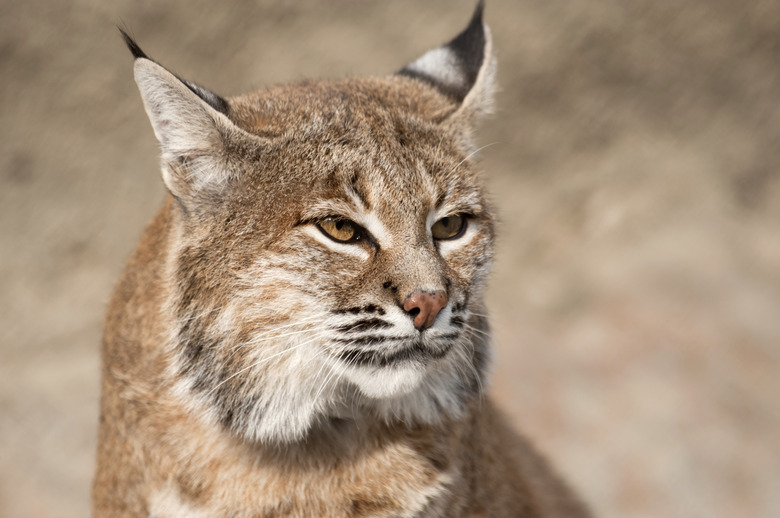Mammals Found In Louisiana
From its upland pine savannas to its vast floodplain swamps, Louisiana includes a wealth of ecological landscapes representative of America's Atlantic-Gulf Coastal Plain. Such a rich range of habitats sets the stage for much wildlife diversity. Sometimes overshadowed by ubiquitous alligators and grand concentrations of wading birds, other Louisiana animals and mammals come in a fantastic array.
Order Artiodactyla: Even-Toed Ungulates
Order Artiodactyla: Even-Toed Ungulates
Today Louisiana only supports one native hoofed mammal, the white-tailed deer, although herds of American bison wintered in the state in historical times. The whitetail is an elegant grazer and browser that adeptly forages even in Louisiana's soggiest landscapes, making it one of the more unique swamp animals of LA. Deer are coveted game animals, as are the 500,000-some feral hogs — non-native artiodactyls — which also roam Louisiana.
Order Carnivora: The Carnivores
Order Carnivora: The Carnivores
The Bayou State supports more than a dozen native carnivores, from the pint-sized long-tailed weasel to the heavyweight Louisiana black bear.
The types of wild cats in Louisiana are limited to bobcats. There used to be other types of wild cats in Louisiana including native cougars and, some believe, jaguars. However, they were killed off by the early 1900s. A few cougars, however, have been spotted in Louisiana in the 21st century, perhaps a sign that they are repopulating the state.
Louisiana's wild canines include coyotes, red foxes and gray foxes, as well as the exterminated red wolf.
Order Chiroptera: The Bats
Order Chiroptera: The Bats
Louisiana animals include roughly a dozen species of native bats from the tricolored bat and southeastern myotis, which may weigh only 4 or 5 grams, to the hoary and northern yellow bats, which can tip the scales at 30 grams or more. Spanish moss — that iconic Deep South bromeliad — provides critical roosting habitat for the Seminole bat as well as the northern yellow bat, also fond of perching in the fronds of cabbage palms.
Order Cingulata: The Armadillos
Order Cingulata: The Armadillos
Only one species of armadillo, an insectivorous mammal mostly found in South America, is native to the United States: the nine-banded armadillo, which has steadily advanced its North American range since the 1800s. This unique, well-armored creature — widely distributed in Louisiana — slurps up ants, beetles and other invertebrates that it uncovers through tenacious rooting.
Order Didelphimorphia: The Opossums
Order Didelphimorphia: The Opossums
Like the armadillo, the Virginia opossum, which prospers throughout Louisiana, is something of a northerly "invader" from the American tropics. It's a marsupial, a line of mammals best known for carrying young in their pouches. With its hand-like paws and naked, prehensile tail, the opossum is a proficient tree climber, but also forages on the ground. This toothy, cat-sized omnivore sometimes defends itself by playing dead — "playing possum" — in the face of a predatory attack.
Order Lagomorpha: Louisiana's Cottontails
Order Lagomorpha: Louisiana's Cottontails
Two species of cottontail rabbits are native to Louisiana: the swamp rabbit and the eastern cottontail. The eastern cottontail occupies an enormous range in the central and eastern United States, while the swamp animals (the heavier, shorter-eared swamp rabbit) are restricted to the South. While the eastern cottontail favors fields, open woods and other upland habitats, the swamp rabbit — a strong swimmer — is typically found in bottomland swamps and marshes.
Order Rodentia: The Rodents
Order Rodentia: The Rodents
Some of the most numerous Louisiana mammals are rodents, among them multiple species of rats, mice and squirrels. Most Louisiana rodents are quite small, but the state's waterways also support one of the world's biggest: the American beaver, exceptional specimens of which may weigh in at 50 kilograms (110 pounds). Another large aquatic rodent is a well-established exotic: the nutria, a South American native.
Order Sirenia: The West Indian Manatee
Order Sirenia: The West Indian Manatee
In Louisiana, West Indian manatees occasionally utilize both nearshore habitats and coastal lakes and rivers, though most appear to be seasonal visitors from Florida. Sometimes seen in brackish waterways such as Lake Pontchartrain, manatees have also been recorded as far inland as the Amite River. Inoffensive, slow-moving grazers of seagrass and other plants, West Indian manatees are the largest of all manatees and dugongs, growing to about 4 meters (13 feet) long and 1,360 kilograms (3,000 pounds).
Order Soricomorpha: Shrews and Moles
Order Soricomorpha: Shrews and Moles
Often mistakenly classed as rodents, shrews and moles belong to their own distinct order of predominantly invertebrate-eating small mammals. Five species are native to Louisiana: the eastern mole and four kinds of shrews — the least, southeastern, Elliot's short-tailed and southern short-tailed. The two short-tailed shrews possess venomous saliva and are quite formidable hunters, capable of tackling mice, scorpions, lizards and other large prey.
References
- Louisiana Department of Wildlife and Fisheries: Feral Hog
- The Southwestern Naturalist: A Possible Occurrence of the Jaguar in Louisiana
- Wolves: Behavior, Ecology, and Conservation; L. David Mech, Luigi Boitani (eds.)
- The Times-Picayune: Gulf Sperm Whales to be Studied for Endangered, Threatened Species Status
- Bat Conservation International: Species Profiles — Lasiurus Seminolus
- National Wildlife Federation: Nine-Banded Armadillo
Cite This Article
MLA
Shaw, Ethan. "Mammals Found In Louisiana" sciencing.com, https://www.sciencing.com/mammals-found-louisiana-8179596/. 31 July 2019.
APA
Shaw, Ethan. (2019, July 31). Mammals Found In Louisiana. sciencing.com. Retrieved from https://www.sciencing.com/mammals-found-louisiana-8179596/
Chicago
Shaw, Ethan. Mammals Found In Louisiana last modified March 24, 2022. https://www.sciencing.com/mammals-found-louisiana-8179596/
